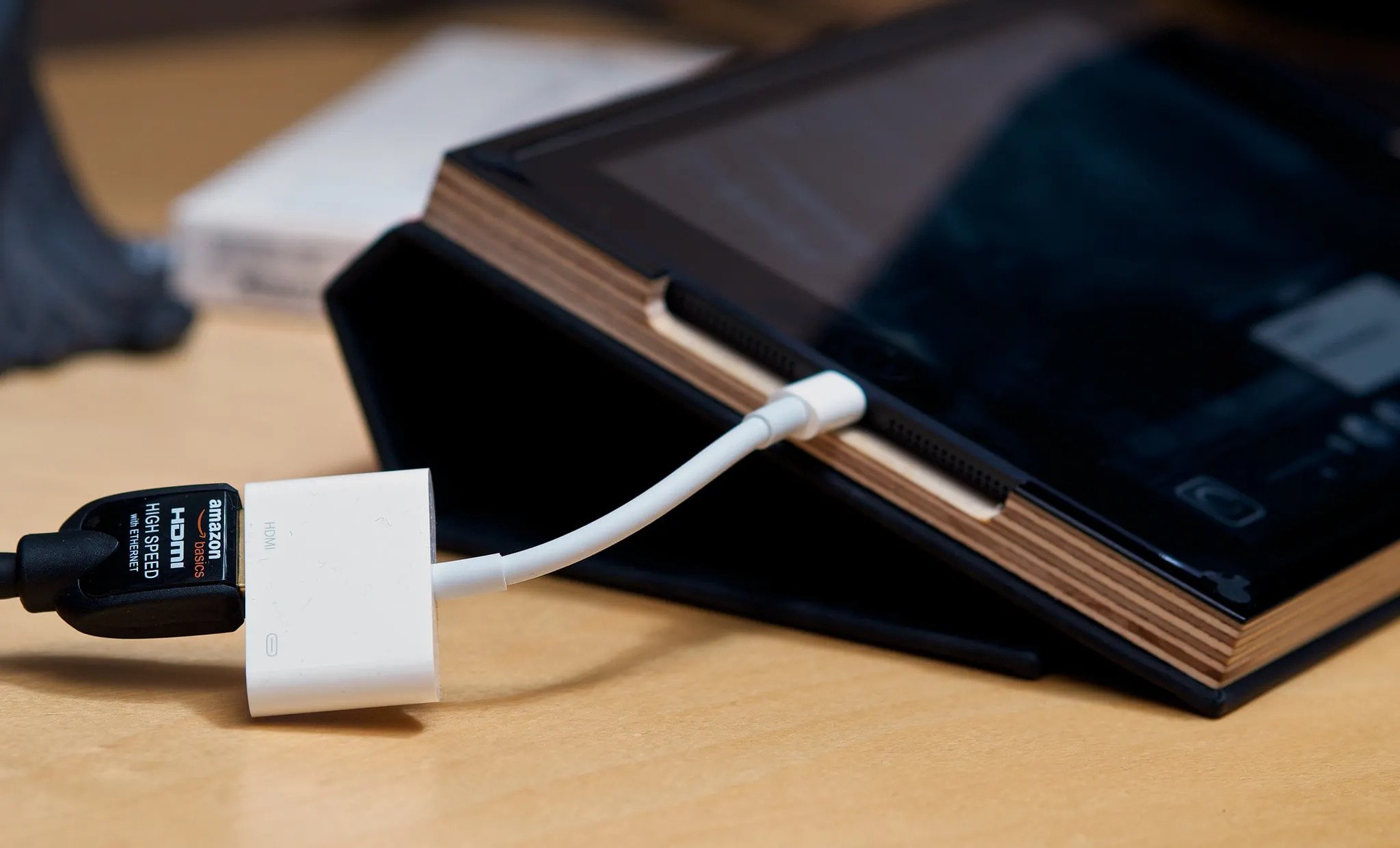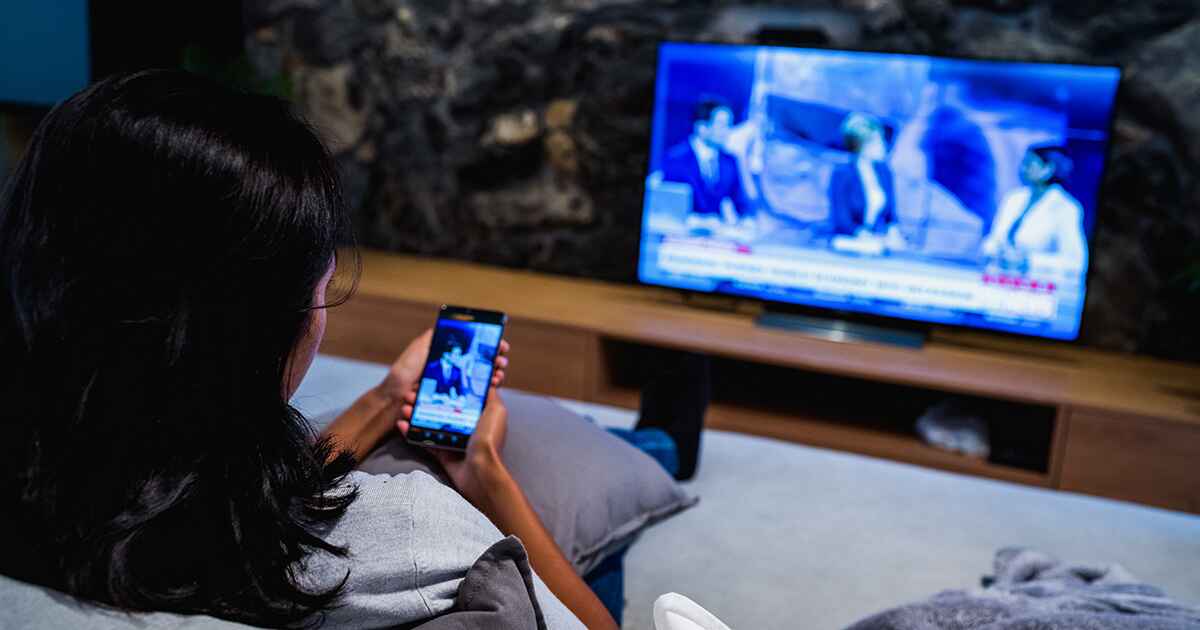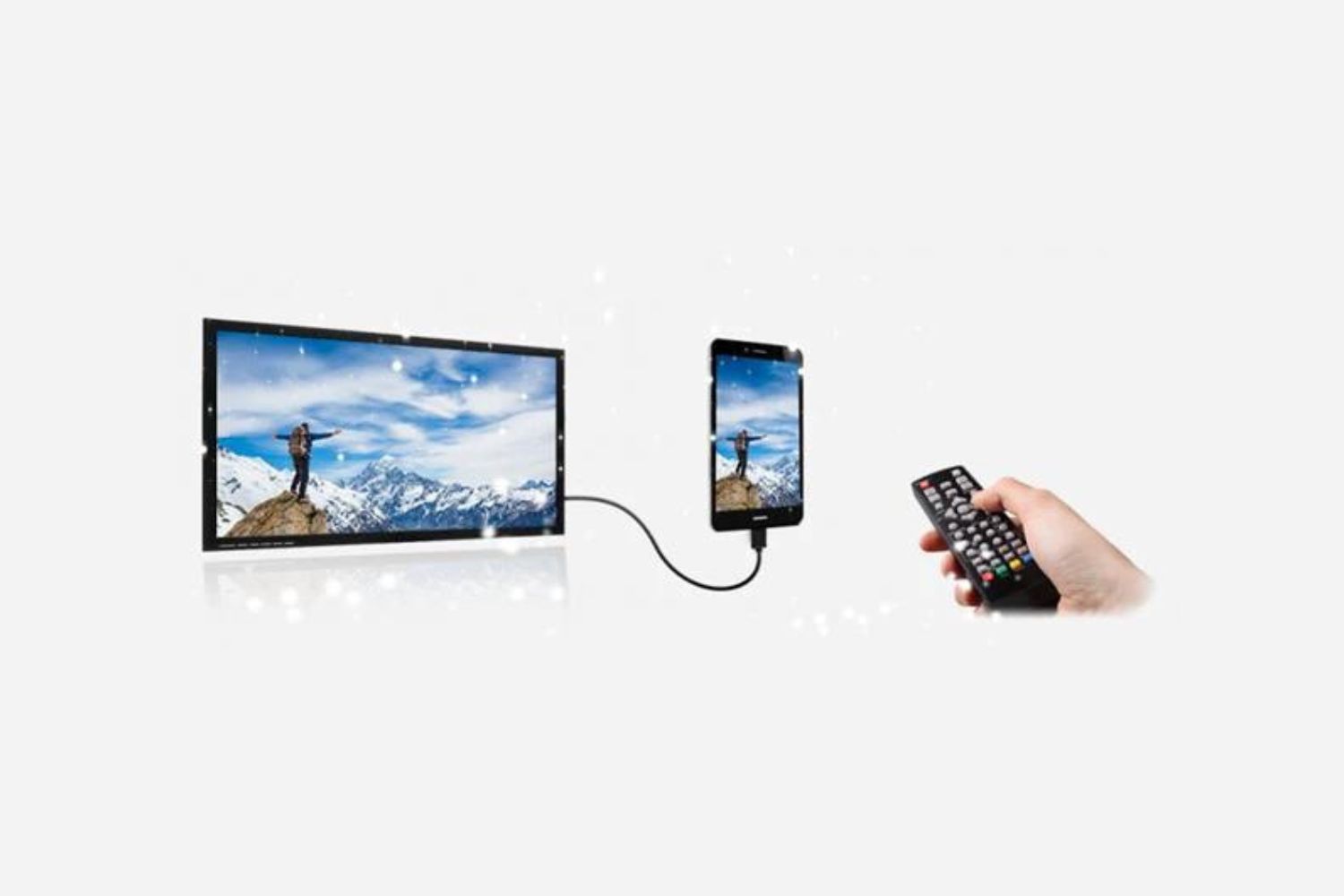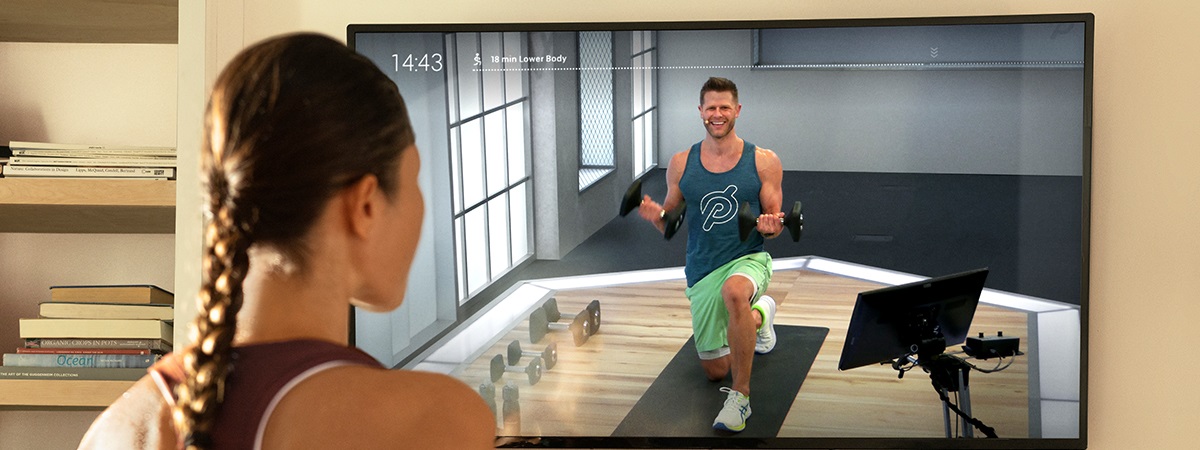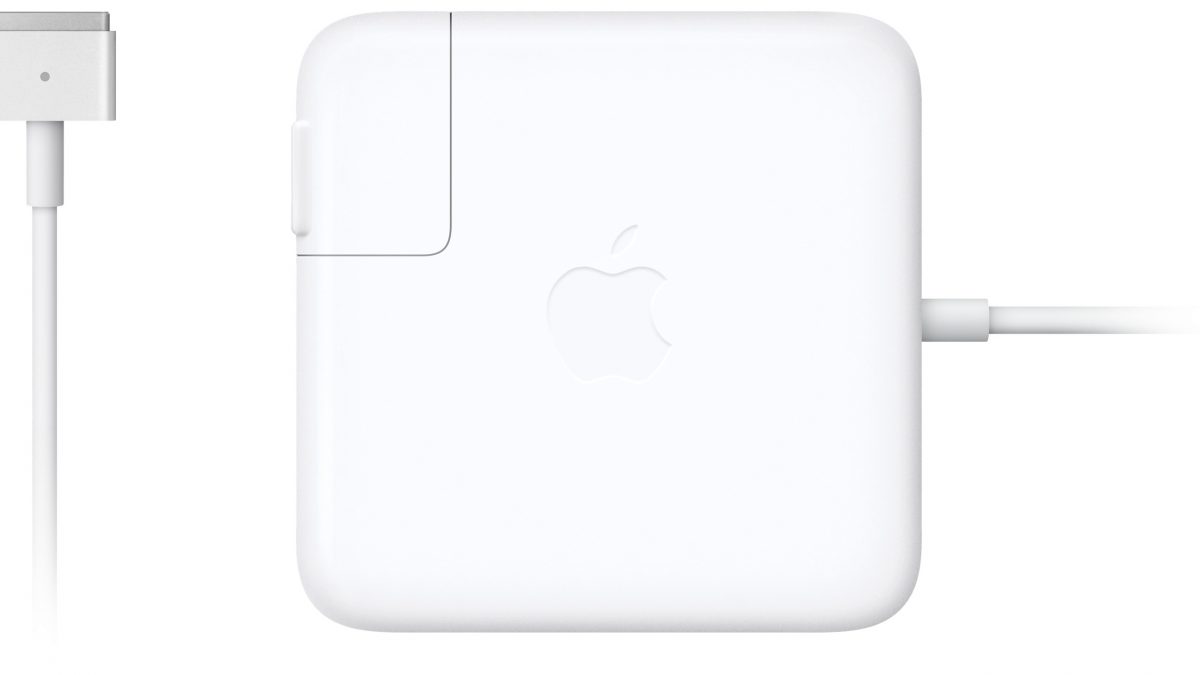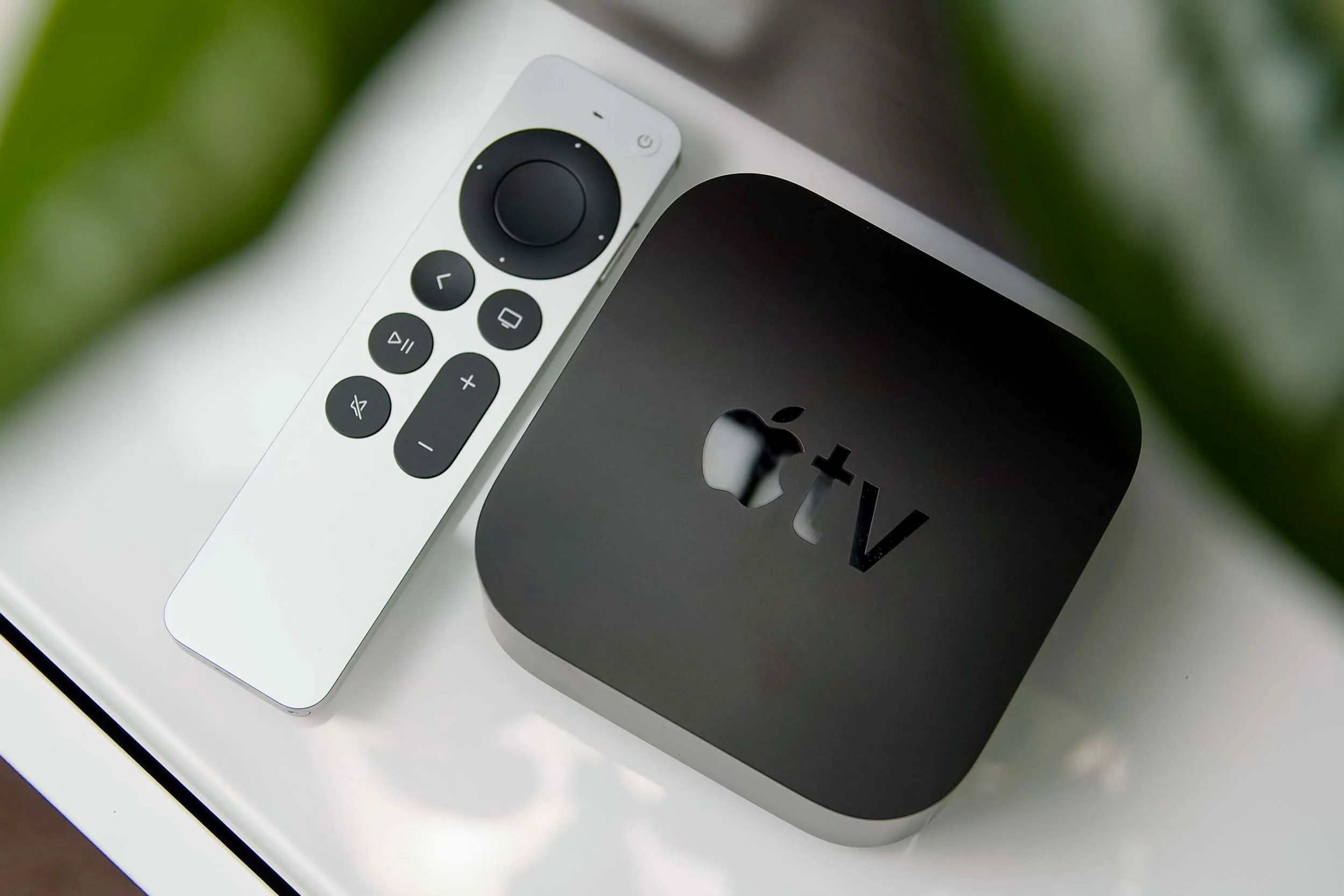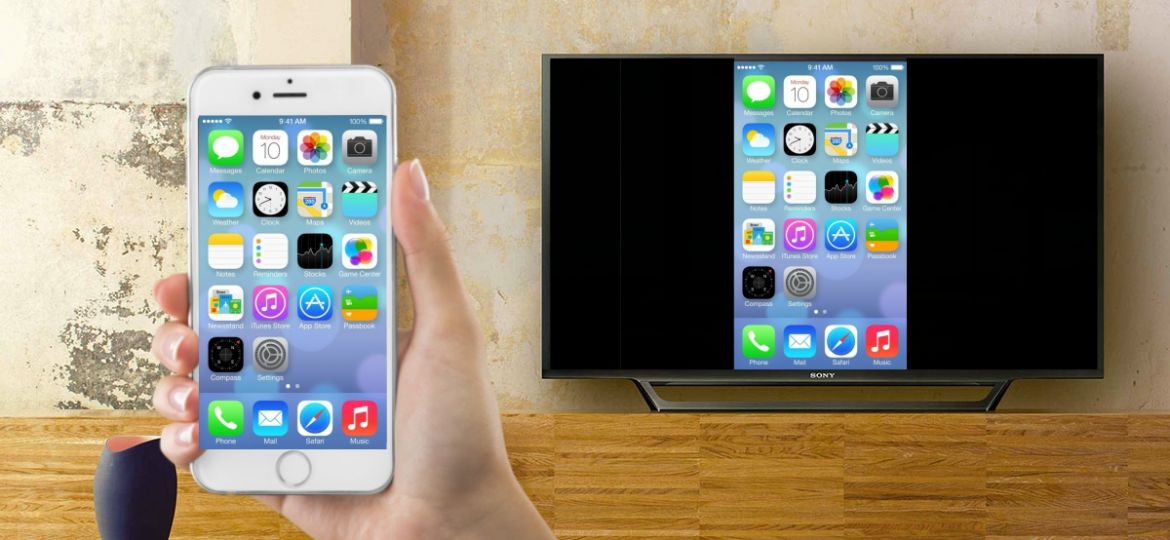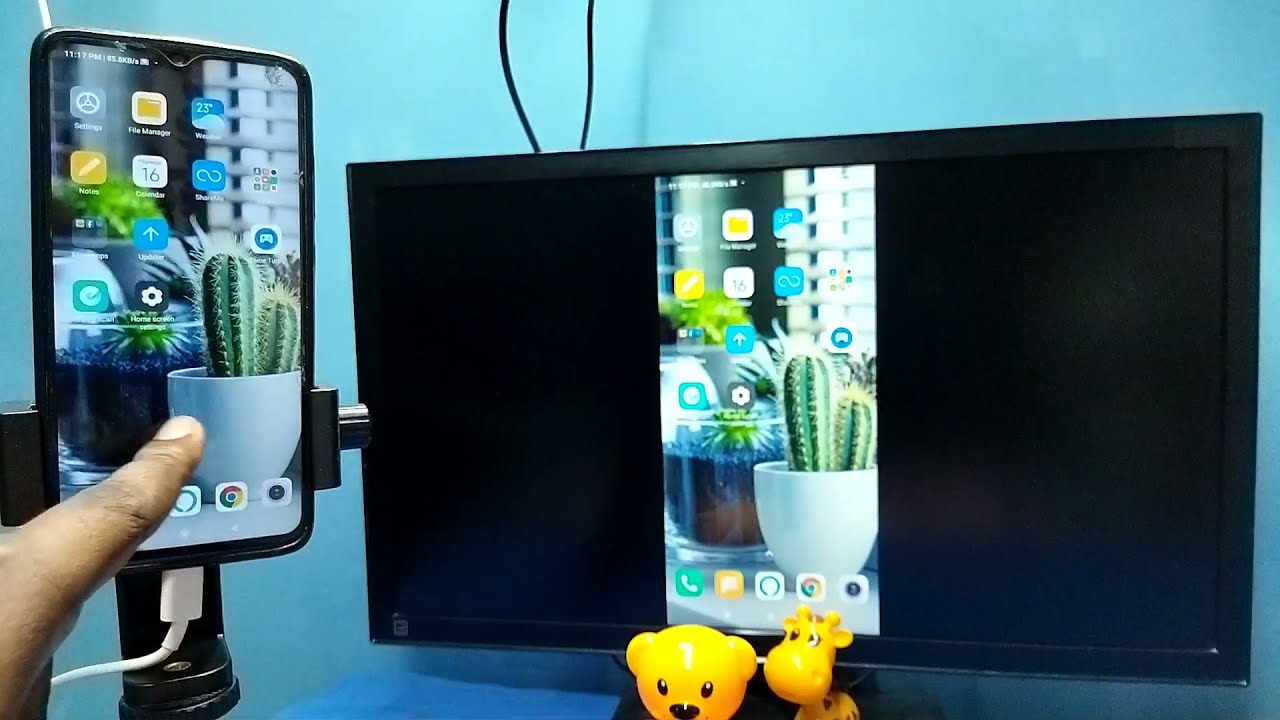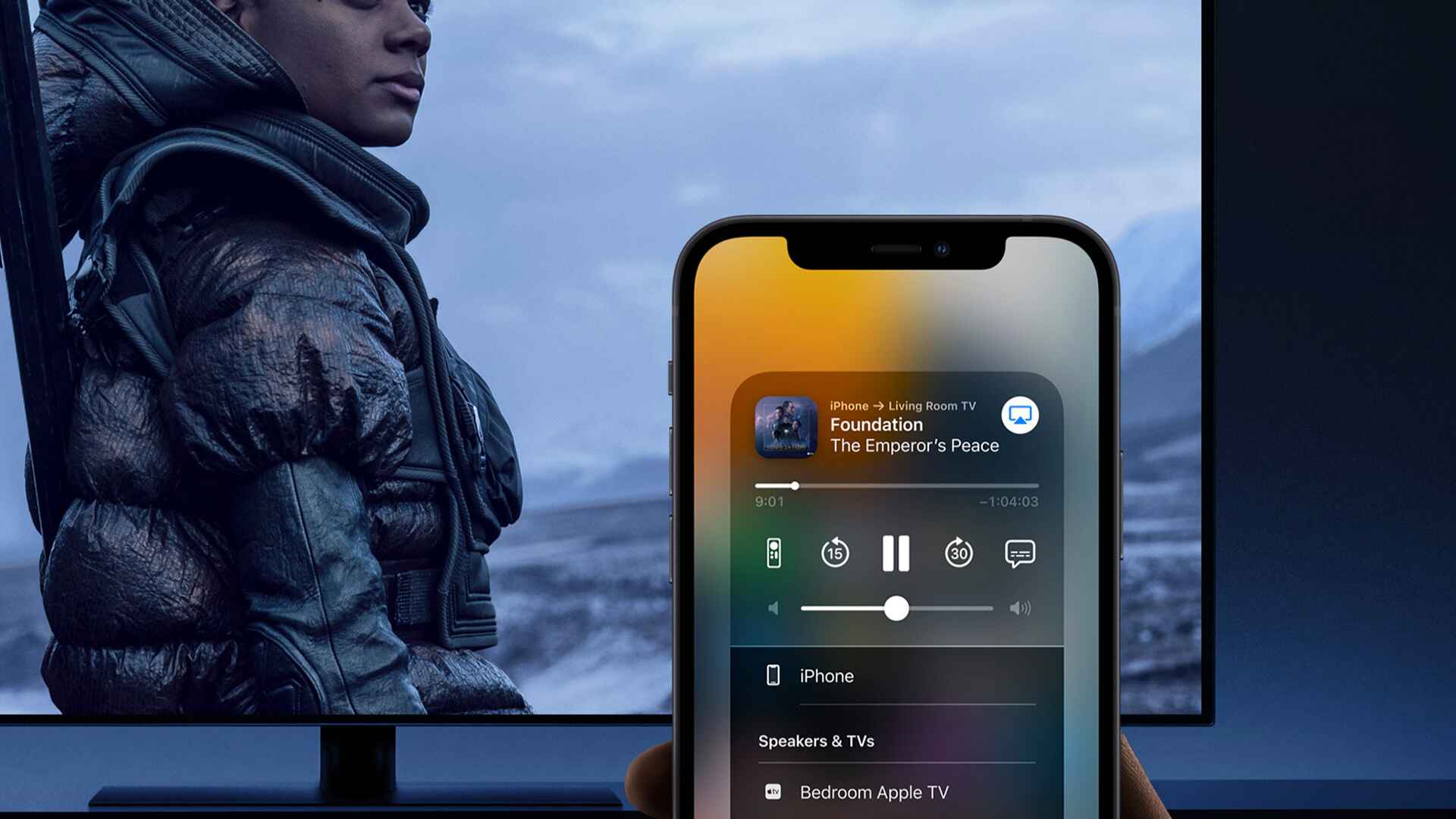Introduction
The Apple HDMI adapter is a handy tool that allows users to connect their Apple devices, such as MacBook, iPhone, or iPad, to an HDMI-compatible display or TV. This enables users to enjoy their favorite movies, shows, presentations, or games on a larger screen. However, there may be instances when you face issues with the HDMI adapter not working as expected.
It can be frustrating when you’re unable to connect your Apple device to an external display or facing display-related issues despite using the HDMI adapter. Fortunately, there are several troubleshooting steps you can take to resolve these problems and get your adapter up and running again.
In this article, we will explore some of the common causes of Apple HDMI adapter not working and provide practical solutions to fix the issues. By following these steps, you can potentially save yourself time and frustration, and get back to enjoying your favorite content on a bigger screen.
Before diving into the troubleshooting steps, it’s essential to understand that connectivity issues can have various underlying causes. It could be related to the adapter itself, the cable or connection, software or firmware updates, display settings, or even compatibility issues between devices. By identifying the specific cause, you’ll be better equipped to address the issue and find a suitable solution.
Now, let’s move on to the next sections where we will discuss each of these causes in detail and provide step-by-step instructions on how to troubleshoot and fix the Apple HDMI adapter issues.
Common Causes of Apple HDMI Adapter Not Working
When faced with Apple HDMI adapter connectivity issues, it’s important to understand the potential causes that could be behind the problem. Here are some common reasons why your Apple HDMI adapter might not be working as intended:
- Faulty cable or connection: One of the most common reasons for HDMI adapter issues is a faulty cable or connection. The cable might be damaged, or the connection between the adapter and the device might be loose. Inspecting the cable and ensuring a secure connection can help overcome this issue.
- Outdated iOS or software: Apple regularly releases updates to improve device performance and address software bugs. If your iPhone, iPad, or MacBook is running an outdated version of iOS or software, it might cause compatibility issues with the HDMI adapter. Updating to the latest software version can often resolve these problems.
- Need for a device restart: Sometimes, a simple restart can fix the HDMI adapter issues. Restarting your Apple device can refresh the system and resolve any temporary glitches that might be affecting the adapter’s functionality.
- Incorrect HDMI input or output selection: If you’re connecting your Apple device to a TV or an external display, it’s important to ensure that you’ve selected the correct HDMI input on the display. Additionally, some displays have multiple HDMI ports, so double-checking that you’ve connected to the correct output is necessary.
- Display settings misconfigured: In some cases, the display settings on your Apple device may not be optimized for the external display. Adjusting the display settings, such as resolution and mirroring settings, can help resolve compatibility issues between the device and the HDMI adapter.
- Resetting settings: If all else fails, resetting the settings on your Apple device to default can often resolve HDMI adapter issues. Note that resetting the settings will revert any personalized configurations back to factory defaults, so it’s advised to backup important data before proceeding.
These are some of the common causes behind Apple HDMI adapter not working as expected. In the following sections of this article, we will delve into each of these causes in more detail and provide step-by-step instructions on how to troubleshoot and fix the issues. By following these solutions, you’ll be able to overcome the connectivity problems and enjoy the benefits of your Apple HDMI adapter once again.
Check Cable and Connection
When encountering issues with your Apple HDMI adapter, the first step is to check the cable and connection. A faulty cable or loose connection can often be the culprit behind the problem. Here’s what you can do:
- Inspect the cable: Begin by examining the HDMI cable connecting your Apple device to the adapter and ensure that it is in good condition. Look for any signs of physical damage, fraying, or loose connectors. If you notice any issues with the cable, consider replacing it with a new one.
- Secure the connection: Next, ensure that the HDMI cable is securely plugged into both the adapter and the device. Check for any loose connections and gently push the cable into place if needed. Sometimes, a loose connection can disrupt the signal transmission, resulting in issues with the HDMI adapter.
- Try a different HDMI port: If you’re connecting your Apple device to a TV or an external display that has multiple HDMI ports, try plugging the cable into a different HDMI port. This can help determine whether the issue lies with the HDMI port itself or the adapter.
- Use a different HDMI cable and adapter: If possible, try using a different HDMI cable and adapter to rule out any potential issues with the current set of devices. Borrow from a friend or use another HDMI cable and adapter that you know is working correctly. If the new cable and adapter work without any issues, it indicates a problem with the original cable or adapter.
- Check for dust or debris: Occasionally, dust or debris can accumulate in the HDMI ports of your Apple device or external display, leading to connection issues. Use a soft brush or canned air to gently clean the HDMI ports and remove any unwanted particles. Be careful not to damage the ports while cleaning.
By checking the cable and connection for any potential issues and ensuring a secure and clean connection, you can eliminate any problems related to faulty connections. If the cable and connection check does not resolve the HDMI adapter issues, proceed to the next troubleshooting steps discussed in this article to further diagnose and fix the problem.
Update iOS and Software
Keeping your Apple device’s software up to date is crucial for optimal performance and compatibility. When faced with HDMI adapter issues, one possible cause could be running an outdated version of iOS or software. Here’s how you can update them:
- Check for iOS updates: Start by checking if there’s a newer version of iOS available for your device. Go to “Settings” on your iPhone or iPad, navigate to “General,” and then select “Software Update.” If an update is available, follow the on-screen instructions to download and install it. Updating to the latest iOS version can often address compatibility and performance-related issues with the HDMI adapter.
- Update software on MacBook: If you’re using a MacBook, it’s equally important to keep the macOS and related software up to date. Click on the Apple menu in the top-left corner, select “System Preferences,” then choose “Software Update.” If any updates are available, click “Update Now” to install them. Updating the software on your MacBook can help ensure that it works seamlessly with the HDMI adapter.
- Restart the device: After updating the iOS or software, it’s a good practice to restart your Apple device. Restarting can help apply the updates effectively and refresh system processes, potentially resolving any HDMI adapter issues that were caused by outdated software.
- Enable automatic updates: To ensure you’re always running the latest iOS version, you can enable automatic updates on your iPhone or iPad. Go to “Settings,” select “General,” then choose “Software Update.” Enable the “Download iOS updates” or “Customize Automatic Updates” option to have your device update automatically when connected to Wi-Fi and charging.
By regularly updating your iOS and software, you ensure that your Apple device is equipped with the latest features, bug fixes, and performance improvements. This can help resolve compatibility issues with the HDMI adapter, ensuring a smooth and reliable connection. If updating the iOS and software doesn’t resolve the HDMI adapter issues, continue to the next troubleshooting steps discussed in this article to further troubleshoot and pinpoint the cause of the problem.
Restart Devices
When facing problems with the Apple HDMI adapter, a simple and effective solution is to restart the devices involved. Restarting your iPhone, iPad, or MacBook can help resolve temporary glitches and refresh the system processes, potentially fixing any issues with the HDMI adapter. Here’s how you can restart your devices:
- Restart iPhone or iPad: To restart your iPhone or iPad, press and hold the power button until you see the “Slide to power off” option. Slide the power button to turn off your device. Once it’s completely powered off, press and hold the power button again until the Apple logo appears. Your device will restart, and you can check if the HDMI adapter issues have been resolved.
- Restart MacBook: If you’re using a MacBook, the process of restarting is slightly different. Click on the Apple menu in the top-left corner of the screen and select “Restart” from the drop-down menu. Wait for your MacBook to shut down and turn back on. Once it restarts, check if the HDMI adapter is working correctly.
Restarting the devices can often solve temporary software or system-related issues that may be affecting the HDMI adapter’s functionality. It allows the devices to start fresh without any lingering glitches, potentially restoring the connection and resolving any issues that were preventing the proper functioning of the adapter.
If restarting your devices doesn’t fix the HDMI adapter issues, proceed to the next troubleshooting steps discussed in this article to further diagnose and solve the problem.
Check HDMI Input and Output
When encountering issues with the Apple HDMI adapter, it’s important to ensure that you have selected the correct HDMI input on the external display and connected the HDMI output of your Apple device appropriately. Here’s what you can do to check the HDMI input and output:
- Select the correct HDMI input: On your TV or external display, make sure you have selected the correct HDMI input. Most TVs have multiple HDMI ports, so ensure that you have chosen the one to which your Apple device is connected. Use the TV’s remote control or the display’s input selection buttons to switch to the correct HDMI input.
- Check HDMI output on Apple device: Confirm that you have connected the HDMI adapter properly to the HDMI output of your Apple device. For iPhone or iPad, use Apple’s Lightning Digital AV Adapter or USB-C Digital AV Multiport Adapter, depending on the device model. For MacBook, use the appropriate HDMI adapter for your MacBook’s port (e.g., USB-C to HDMI adapter).
- Try a different HDMI cable: If you have access to another HDMI cable, consider trying a different one to connect your Apple device with the HDMI adapter. Sometimes, a faulty or incompatible HDMI cable can cause connectivity issues. Using a different cable can help determine if the problem lies with the cable or other components.
- Inspect the HDMI ports: Examine the HDMI ports on both your Apple device and the external display. Look for any physical damage, debris, or bent pins. Use a flashlight if needed to get a better view. If you notice any issues, such as bent pins or debris, try cleaning the ports gently with a soft brush or compressed air. Be cautious not to damage the ports while cleaning.
- Restart the external display: If the HDMI input and output seem correct, but the connection is still not working, try restarting the external display. Power off the display and unplug it from the power source. Wait for a few minutes, then plug it back in and turn it on. Once it’s powered on, select the correct HDMI input again and check if the HDMI adapter starts functioning properly.
Ensuring the correct HDMI input is selected on the external display and verifying the proper HDMI output connection on your Apple device can prevent simple configuration errors that might affect the HDMI adapter’s functionality. If the HDMI input and output check does not resolve the issues, proceed to the next troubleshooting steps discussed in this article to further diagnose and solve the problem.
Adjust Display Settings
Sometimes, the display settings on your Apple device may need adjustment to ensure compatibility and optimal performance with the HDMI adapter. Here are some steps you can take to adjust display settings:
- Adjust resolution: Start by adjusting the resolution settings on your Apple device. Go to “Settings” on your iPhone or iPad, navigate to “Display & Brightness” or “Display & Brightness & Text Size,” and select “Display Resolution” or “Resolution.” Choose a resolution that is supported by both your device and the external display. Sometimes, mismatched resolutions can cause display issues with the HDMI adapter.
- Enable or disable mirroring: Check if you have enabled screen mirroring on your Apple device. To do this, go to “Settings” and select “Display & Brightness” or “Display & Brightness & Text Size.” Look for the “Screen Mirroring” option and ensure it is turned on if you want to mirror your device’s screen on the external display. If it’s already enabled and you’re facing issues, try disabling it and see if that resolves the HDMI adapter problems.
- Configure overscan settings: Some TV displays have overscan settings that can affect the aspect ratio or the visible area of the screen. If you notice that the display on the TV doesn’t fit the screen properly or is cut off around the edges, access the TV’s settings to adjust the overscan settings. This varies depending on the TV brand and model, so consult the TV’s user manual or look for overscan settings in the TV’s menu.
- Try different display modes: Your Apple device might offer different display modes, such as extended desktop or mirroring mode. Experiment with different display modes to see if they work better with the HDMI adapter and external display. Additionally, you can try disconnecting and reconnecting the HDMI adapter while the device is running to trigger the display mode selection prompt.
- Reset display settings: If you have made various display settings changes and are still experiencing issues, you can try resetting the display settings on your Apple device. Go to “Settings,” select “General,” then choose “Reset.” From the reset options, select “Reset All Settings.” Note that this will reset all your device’s settings to their default values, so make sure to back up any important data before proceeding.
Adjusting the display settings on your Apple device can often resolve compatibility and display-related issues with the HDMI adapter. By tweaking resolution, enabling or disabling mirroring, configuring overscan settings, trying different display modes, or resetting display settings, you can potentially overcome any settings-related obstacles and establish a smooth connection between your device and the external display. If adjusting the display settings doesn’t resolve the HDMI adapter issues, proceed to the next troubleshooting steps discussed in this article to further diagnose and solve the problem.
Reset Settings
If you have exhausted all other troubleshooting options and are still experiencing issues with your Apple HDMI adapter, resetting the settings on your device may be a viable solution. Resetting the settings can help resolve any underlying software issues or conflicts that might be affecting the HDMI adapter. Here’s how you can reset the settings:
- Backup your data: Before proceeding with a reset, it’s important to back up any essential data on your Apple device. This ensures that you won’t lose any important files or information during the reset process. You can back up your device using either iCloud or iTunes on a computer.
- Reset all settings: To reset the settings on an iPhone or iPad, go to “Settings,” select “General,” and then choose “Reset.” From the reset options, select “Reset All Settings.” This will reset all the settings on your device to their default values, but it will not delete any data or content.
- Confirm the reset: A confirmation window will appear, warning you that this action will erase all personalized settings and return them to their defaults. If you’re certain about proceeding, enter your passcode or Apple ID password, and then confirm the reset. Your device will restart, and the settings will be reset to their factory defaults.
- Reconfigure device settings: After the reset, you’ll need to configure your device’s settings again. This includes connecting to Wi-Fi, signing in to your Apple ID, and adjusting preferences such as display settings, sound, notifications, and privacy settings. Take your time to customize your device to your liking.
- Test the HDMI adapter: Once you’ve completed the settings reconfiguration, reconnect your Apple device to the HDMI adapter and test if the issue has been resolved. Check if the HDMI adapter now functions properly and if your device can successfully connect to the external display.
Resetting the settings on your Apple device can help eliminate any software-related issues that may have been interfering with the HDMI adapter’s functionality. However, it’s worth noting that this will restore all settings to their defaults, which means you’ll need to reconfigure personalized preferences. If the HDMI adapter issues persist even after resetting the settings, it’s recommended to contact Apple Support for further assistance.
Contact Apple Support
If you have gone through all the troubleshooting steps mentioned above and are still unable to resolve the issues with your Apple HDMI adapter, it may be time to seek assistance from Apple Support. The technical experts at Apple are equipped with the knowledge and resources to help you troubleshoot and resolve any persistent problems. Here’s how you can reach out to them:
- Online support: Visit the Apple Support website and navigate to the appropriate section based on your device (iPhone, iPad, MacBook, etc.). Here, you can find a wealth of resources, including troubleshooting guides, FAQs, and community forums, to help you troubleshoot your HDMI adapter issues. You can also reach out to Apple Support via live chat for real-time assistance.
- Phone support: If you prefer to speak directly to an Apple support representative, you can contact Apple Support by phone. Visit the Apple Support website, select your device, and navigate to the “Contact Support” section. From there, you can find the phone number specific to your region and speak with a support representative who can guide you through troubleshooting steps over the phone or book a service appointment if required.
- Apple Store appointment: If you have an Apple Store nearby, you can schedule an appointment with a Genius Bar technician. They can provide hands-on assistance and assess the issue with your Apple HDMI adapter in person. To make an appointment, visit the Apple Support website, select your device, navigate to the “Contact Support” section, and choose the option to schedule an appointment at an Apple Store near you.
By reaching out to Apple Support, you can tap into their expertise and receive personalized assistance tailored to your specific situation. They will guide you through additional troubleshooting steps, offer advice, and potentially provide a solution to your Apple HDMI adapter issues. Remember to provide them with all the relevant information, including the steps you have already taken to troubleshoot the problem.
Don’t hesitate to contact Apple Support when all other troubleshooting steps have been exhausted. They are there to assist you, and their knowledge and expertise can help resolve your HDMI adapter issues effectively.







